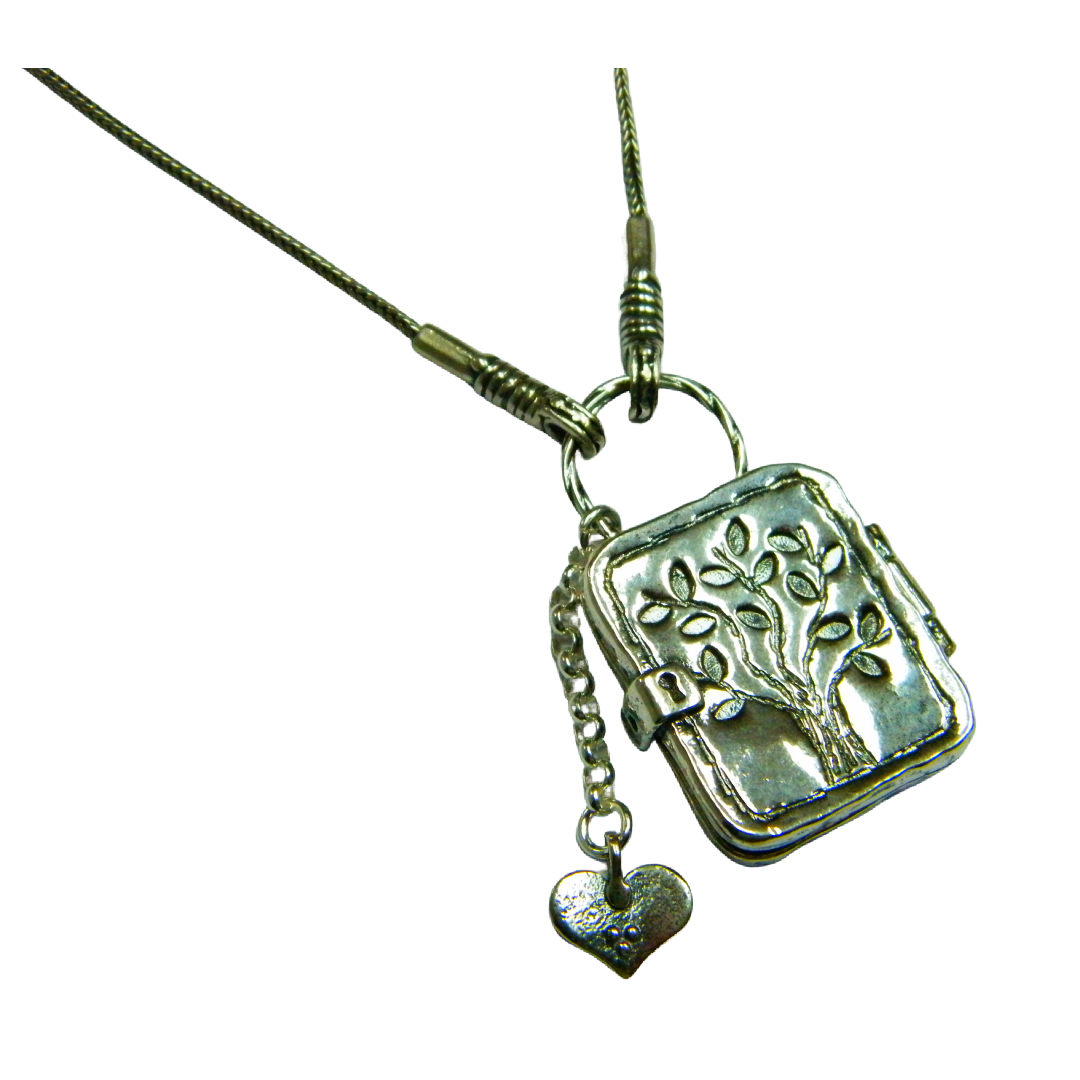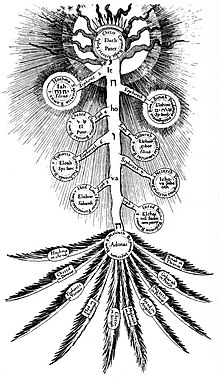
Read about the Tree of Life
Share
The Tree of Life
The Tree of Life is a popular symbol in Jewish culture, and a Tree of Life home blessing makes for a meaningful and beautiful gift.
Here are some ideas for Tree of Life home blessing Jewish gifts:
-
Tree of Life Wall Art: A piece of Tree of Life wall art with a home blessing written on it can be a great gift. It can be made from wood, metal, or any other material and can come in a variety of sizes.
-
Tree of Life Mezuzah: A Tree of Life mezuzah is a small decorative case that is placed on the doorpost of a Jewish home. It contains a parchment with verses from the Torah and serves as a reminder of the Jewish faith. A Tree of Life mezuzah can be a beautiful and meaningful gift.
-
Tree of Life Jewelry: Jewelry featuring the Tree of Life symbol can be a unique and stylish gift. It can be a necklace, bracelet, or earrings and can be made from a variety of materials such as gold, silver, or beaded.
-
Tree of Life Candlesticks: A pair of Tree of Life candlesticks can make a beautiful and useful gift. They can be used to light Shabbat candles and can serve as a reminder of the Tree of Life blessing.
-
Tree of Life Challah Board: A Tree of Life challah board is a board used for serving challah, a traditional Jewish bread. It can be made from wood or glass and can be engraved with the Tree of Life symbol and the home blessing.
These are just a few ideas for Tree of Life home blessing Jewish gifts.
What is the meaning behind the Tree of Life?
The tree of life, mentioned in the books of Genesis and Revelation, is a life-giving tree created to enhance and perpetually sustain the physical life of humanity. The tree was planted by God in the Garden of Eden: “The LORD God made all kinds of trees grow out of the ground—trees that were pleasing to the eye and good for food. In the middle of the garden were the tree of life and the tree of the knowledge of good and evil” (Genesis 2:9). The centrally located tree of life would have been easily accessible to Adam and Eve from any point in the garden.
The Tree of Life is a popular and universal symbol that represents multiple different things across various cultures and religions. The symbol does not belong to one specific culture as it has been used all over the world for centuries.
The tree is seen as a sacred symbol, which carries significant meanings in both religious and spiritual philosophies. While the Tree of Life symbolizes many different things, there are some common themes that the symbol represents within multiple cultures.
THE MEANING OF THE TREE OF LIFE WITHIN MULTIPLE CULTURES
A Connection to Everything: The Tree of Life commonly represents the interconnectedness of everything in the universe. It symbolizes togetherness and serves as a reminder that you are never alone or isolated, but rather that you are connected to the world. The roots of the Tree of Life dig deep and spread into the earth, thereby accepting nourishment from Mother Earth, and its branches reach up into the sky, accepting energy from the sun and moon.
Ancestry, Family, and Fertility: The Tree of Life symbol also represents the connection to one’s family and ancestors. The Tree of Life has an intricate network of branches that represents how a family grows and expands throughout many generations. It also symbolizes fertility as it always finds a way to keep growing, through seeds or new saplings, and is lush and green, which signifies its vitality.
Growth and Strength: A tree is a universal symbol of strength and growth as they stand tall and strong all over the world. They spread their roots deep into the soil to ground and stabilize themselves. Trees can weather the toughest of storms, which is why they are such a prominent symbol for strength. The Tree of Life represents growth as a tree starts out as a small, delicate sapling and grows over a long time into a giant, strong tree. The tree grows up and outwards, representing how a person grows stronger and increases their knowledge and experiences throughout their lifetime.
Peace: Trees have always evoked a sense of calm and peace so it is unsurprising that the Tree of Life is also a symbol for peacefulness and relaxation. Trees have a relaxing presence as they stand tall and still while their leaves flutter in the breeze. The Tree of Life serves as a reminder for the unique, calming feeling that one gets from trees.
THE HISTORY OF THE TREE OF LIFE SYMBOL
Tree of Life jewels
As a symbol, the Tree of Life goes all the way back to ancient times. The oldest known example was found in the Domuztepe excavations in Turkey, which dates back to about 7000 BC. It is believed that the symbol spread from there in various ways.

A similar depiction of the tree was discovered in the Acadians, which dates back to 3000 BC. The symbols depicted a pine tree, and because pine trees do not die, the symbols are believed to be the first depictions of the Tree of Life.

Source: Wikipedia
TREE OF LIFE SYMBOLISM IN DIFFERENT CULTURES
Christianity - The Tree of Life is mentioned in the Bible in the Book of Genesis. It is the tree that grows within the Garden of Eden and is the source of eternal life. There are several meanings behind the Tree of Life symbol in Christianity. Some believe it to be the symbol of humanity free from corruption and sin, while others believe it to represent love. The tree is believed to have healing properties and its fruit grants immortality.


Buddhism - In Buddhism, the Tree of Life is known as the Bhodi-tree and is believed to be the Tree of Enlightenment. It was under this tree that Buddha reached enlightenment so it is seen as a very sacred symbol.
Celtic Beliefs - The Tree of Life is still a prominent symbol in the Celtic beliefs and is depicted in multiple forms. They believe the roots represent the ‘other world’, the trunk represents the mortal world and connects the roots and branches, and the branches represent the world above, or the heavens.
Islam - The Tree of Life is known as the Tree of Immortality in the Quran. It appeared in Eden and is the tree from which Adam and Eve ate after Allah had forbidden them from doing so.
Judaism - In Judaism, The Tree of Life is what sustains and nourishes life. It stands in the center of a fruitful garden planted by Yahweh.
The Hebrew term etz chaim (literally “tree of life”) is a common one in Jewish life, often used to refer to the Torah. It is a popular name for synagogues and Jewish schools as well as the title of one of the major works of Jewish mysticism.
The first reference to the tree of life in Jewish texts comes from the biblical story of the Garden of Eden. Genesis 2:9 relates that God filled the garden with beautiful and tasty trees, and in the middle planted two in particular — the tree of life and the tree of knowledge of good and evil, the latter of which he forbade Adam and Eve to eat.

The tree of life as a metaphor for the Torah comes from the Book of Proverbs, which uses the term three times, the most famous of which is the saying in Proverbs 3:18: Etz chaim hee l’machazikim bah (“She is a tree of life to those who grasp her”). This line, referring to the Torah, is commonly sung in Ashkenazi congregations as the Torah is returned to the ark after public readings.
Tree of life (Kabbalah)

The nodes are usually represented as spheres and the lines are usually represented as paths. The nodes usually represent encompassing aspects of existence, God, or the human psyche. The lines usually represent the relationship between the concepts ascribed to the spheres or a symbolic description of the requirements to go from one sphere to another. The nodes are also associated to deities, angels, celestial bodies, values, single colors or combinations of them, and specific numbers. The columns are usually symbolized as pillars. These pillars usually represent different kinds of values, electric charges, or types of ceremonial magic. It is usually referred to as the Kabbalistic tree of life in order to distinguish it from other concepts with the same name. In the Jewish Kabbalah, the nodes are called sephiroth. The diagram is also used by Christian Cabbala, Hermetic Qabalah and Theosophy. The diagram is believed to be derivable from the flower of life.
According to Chassidist Kabbalist scholars, the tree of life is to be interpreted in the following way:
- The tree represents a series of divine emanations of God's creation itself ex nihilo, the nature of revealed divinity, the human soul, and the spiritual path of ascent by man. In this way, Kabbalists developed the symbol into a full model of reality, using the tree to depict a map of creation.
- The symbolic configuration is made of 10 spiritual principles, but 11 can be shown, since "Keter" and "Da'at" are interchangeable.
- The tree of knowledge of good and evil is equivalent to the 10 spheres seen from the last sphere of the diagram ("Malkuth"), and the original tree of life is equivalent to the 10 spheres seen from the middle sphere of the diagram ("Tiferet").
- Kabbalists believe the tree of life to be a diagrammatic representation of the process by which the universe came into being.
- On the tree of life, the beginning of the universe is placed in a space above the first sphere (named "Keter" or "crown" in English). It is not always pictured in reproductions of the tree of life, but is referred to universally as Ain Soph Aur ("Ein Sof" in Hebrew or "endless light" in English).
- To Kabbalists, it symbolizes that point beyond which our comprehension of the origins of being can't go. It is considered to be an infinite nothingness out of which the first "thing", usually understood among Kabbalists to be something approximating "energy", exploded to create a universe of multiple things.
- Kabbalists also don't envision time and space as pre-existing and place them at the next three stages on the tree of life.
- First is "Keter", which is thought of as the product of the contraction of "Ein Sof" into a singularity of infinite energy or limitless light. In the Kabbalah, it is the primordial energy out of which all things are created.
- The next stage is "Chokhmah" (or "wisdom" in English), which is considered to be a stage at which the infinitely hot and contracted singularity expanded forth into space and time. It is often thought of as pure dynamic energy of an infinite intensity forever propelled forth at a speed faster than light.
- Next comes "Binah" (or "understanding" in English), which is thought of as the primordial feminine energy, the supernal mother of the universe which receives the energy of "Chokhmah", cooling and nourishing it into the multitudinous forms present throughout the whole cosmos. It is also seen as the beginning of time itself.
- Numbers are very important to Kabbalists, and the Hebrew letters of the alphabet also have a numerical value for the Kabbalists. Each stage of the emanation of the universe on the tree of life is numbered meaningfully from one ("Keter") to ten ("Malkuth"). Each number is thought to express the nature of its sphere.
- The first three spheres, called the "supernal" spheres, are considered to be the primordial energies of the universe. The next stages of evolution on the tree of life are considered to exist beyond a space on the tree, called the "Abyss", between the "supernals" and the other spheres, because their levels of being are so distinct from each other that they appear to exist in two totally different realities. The "supernal" spheres exist on a plane of divine energy. This is why another correspondence for "Binah" is the idea of suffering because the "supernal" maternal energy gives birth to a world that is inherently excluded from that divine union.
- After "Binah", the universe gets down to the business of building the materials it will need to fulfill its evolution and be creating new combinations of those materials until it is so dense that, by the stage of "Malkuth", the initial pure limitless energy has solidified into the physical universe.
- Since its energies are the basis of all creation, the tree of life can potentially be applied to any area of life, especially the inner world of man, from the subconscious all the way to what Kabbalists call the higher self.
- But the tree of life does not only speak of the origins of the physical universe out of the unimaginable but also of man's place in the universe. Since man is invested with mind, consciousness in the Kabbalah is thought of as the fruit of the physical world, through whom the original infinite energy can experience and express itself as a finite entity.
- After the energy of creation has condensed into matter, it is thought to reverse its course back up the tree until it is once again united with its true nature: "Keter". Thus, the Kabbalist seeks to know himself and the universe as an expression of God and to make the journey of return by means of the stages charted by the spheres, until he has come to the realization he sought.
- (Gathered from Wikipedia and other Internet sites and sources)





